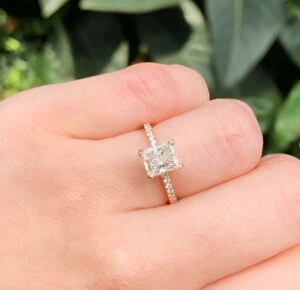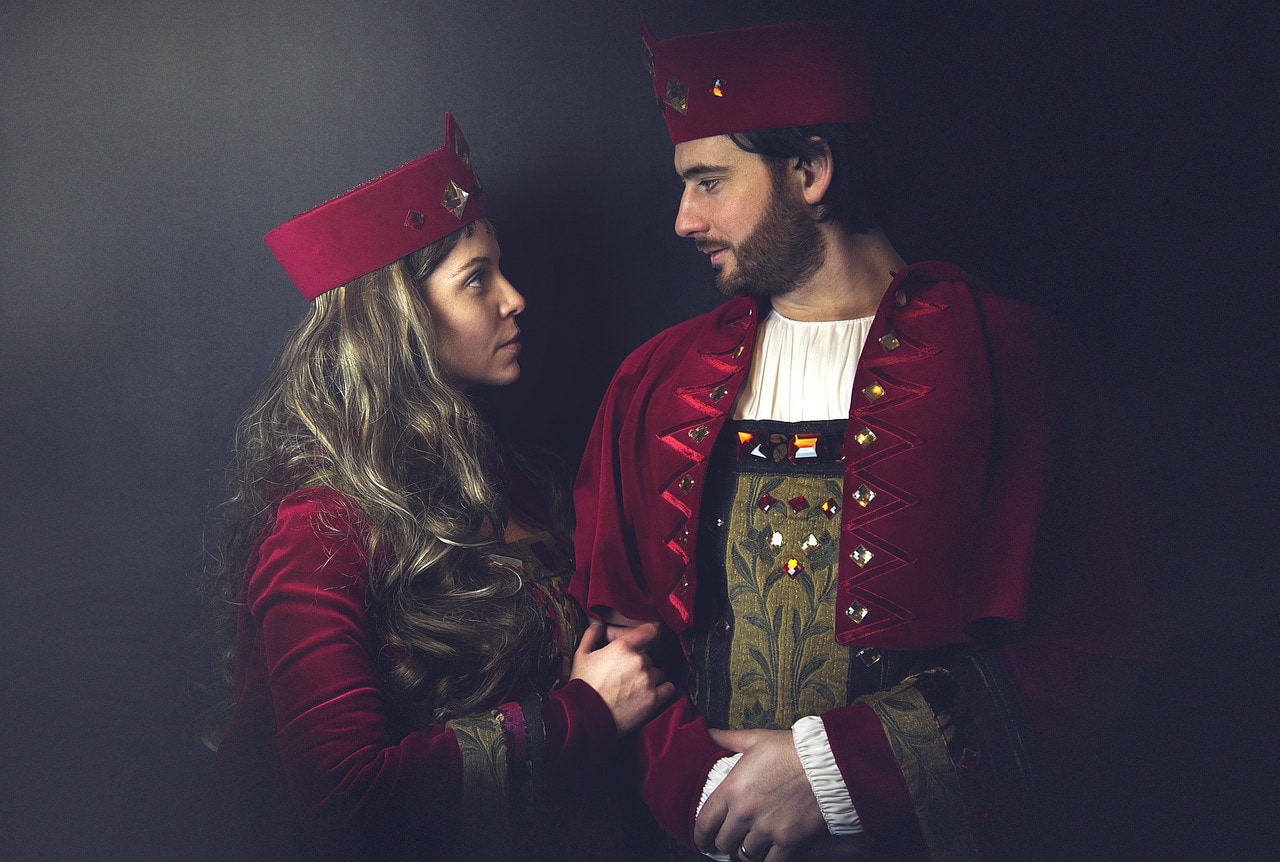
Table of Contents
The Renaissance period of Italy and Europe as a whole is famous for its paintings, sculptures, and architecture, which often leaves Renaissance jewelry at the back of people’s minds. Yet, it really isn’t surprising that the Renaissance was one of a few periods in Europe’s history, and of the world as a whole, that saw the most spectacular advances in the jewelry-making craft.
Let’s go over what exactly Renaissance jewelry is, how it’s different from what came before it, what makes it special, how it affected later jewelry making, and where you can find Renaissance jewelry today.
History, Development, and Characteristics of Renaissance Jewelry
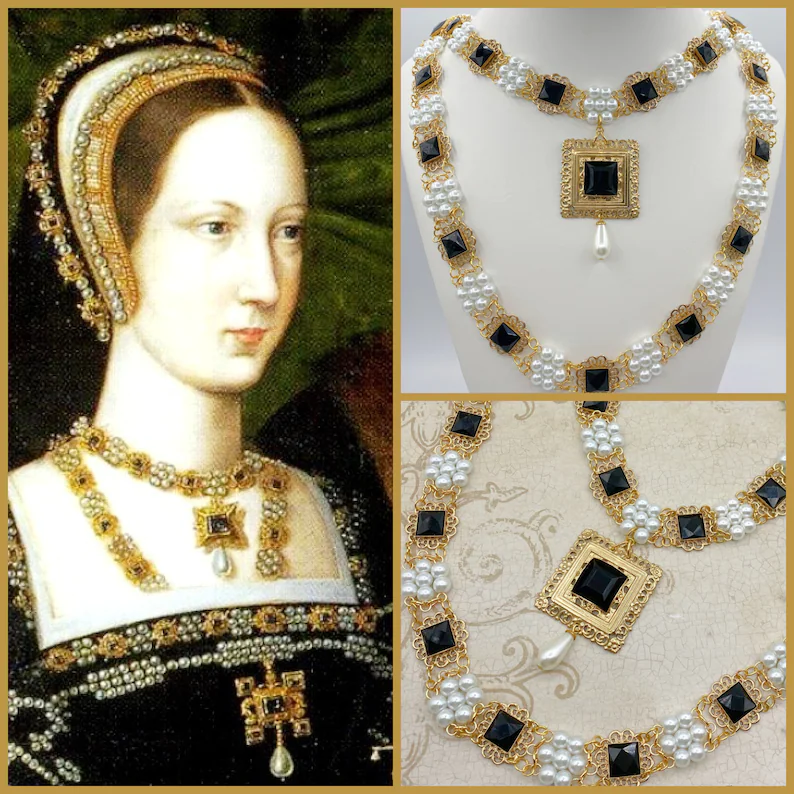
Lasting approximately three hundred years between the 14th and the 17th centuries AD, the Renaissance Period for Europe marked major advances in the arts and architecture, as well as huge shifts in economic and political power across the continent, all fueled by the major profits coming in from Europe’s colonialism in the Americas, Asia, and Africa.
It’d be wrong to just focus on the influx of precious metals, gemstones, fabrics, and general wealth, because – as far as art is concerned – Renaissance was also marked by a major shift back to the aesthetics and inspirations of the Ancient Greek and Roman worlds.
For the most part, the artistry of the ancient world was forgotten by Europeans during the Middle Ages, as not much of it was preserved or studied nor appreciated. That started to slowly change as more and more artists looked back to Greece and Rome for inspiration and their new creations began to be funded by wealthy nobles who appreciated the change from the repeating Christian motifs.
This isn’t to say that the Renaissance turned its back on Christianity, of course – Christian symbolism and style were also present in a lot of artists’ works, but both Christian and ancient motifs became all the more extravagant and richer with the influx of countless rubies, emeralds, sapphires, pearls, as well as gold and silver from Europe’s new colonies.
All Across Europe
Another factor to consider is how much widespread the Renaissance was. While it started in Italy, that whole part of Europe’s artistic history quickly spread all over the Old Continent.
With the royal and noble courts increasingly intermingling, and with new port cities in Portugal, Spain, France, England, the Holy Roman Empire, and other countries getting richer, the Renaissance became an all-encompassing period and so, jewelry crafting and other arts became influenced by various countries, trends, and cultures.
Jewelry Making During the Renaissance
Probably the most important change during the Renaissance is the fact that goldsmiths and jewelry crafters started specializing in specific techniques, materials, and parts of the jewelry-making process. This meant a few things:
- Making jewelry became a multi-step process that required the work of many different people – a painter to design it, a goldsmith to cast and shape it, an engraver to add the finishing touches and/or enamel, and a gemstone specialist to place a giant emerald, ruby, or diamond on top of it.
- The quality and intricate detail of Renaissance jewelry quickly surpassed everything that had come before it thanks to that specialism.
- Getting high-quality jewelry made by a specific jeweler became harder as fewer craftsmen were generalists enough to make a big and complex piece all on their own.
- Even within a certain step of the jewelry-making process, many professionals were way too specialized. For example, some goldsmiths specialized in two or three specific styles while other goldsmiths favored others – this meant that you didn’t just need to find a good goldsmith, you needed to find one that could do exactly what you wanted.
- Prices soared as more people were involved in the process in addition to the overall rising value of the gemstones and metals used. That being said, simpler and more affordable jewelry also existed for the lower classes as both silver and gold became more common while new enameling techniques got invented.
All in all, the Renaissance was a period of richness, color, and sheer volume for the European jewelry scene. It was also a period for innovation, however, and that shaped the jewelry industry for centuries to come.
Types of Renaissance Jewelry
Most Renaissance jewelry was impressive and covered with colorful gemstones. Loud, bold, and confident designs were the norm. Let’s go over the main types of jewelry popular at the time.
Pendants
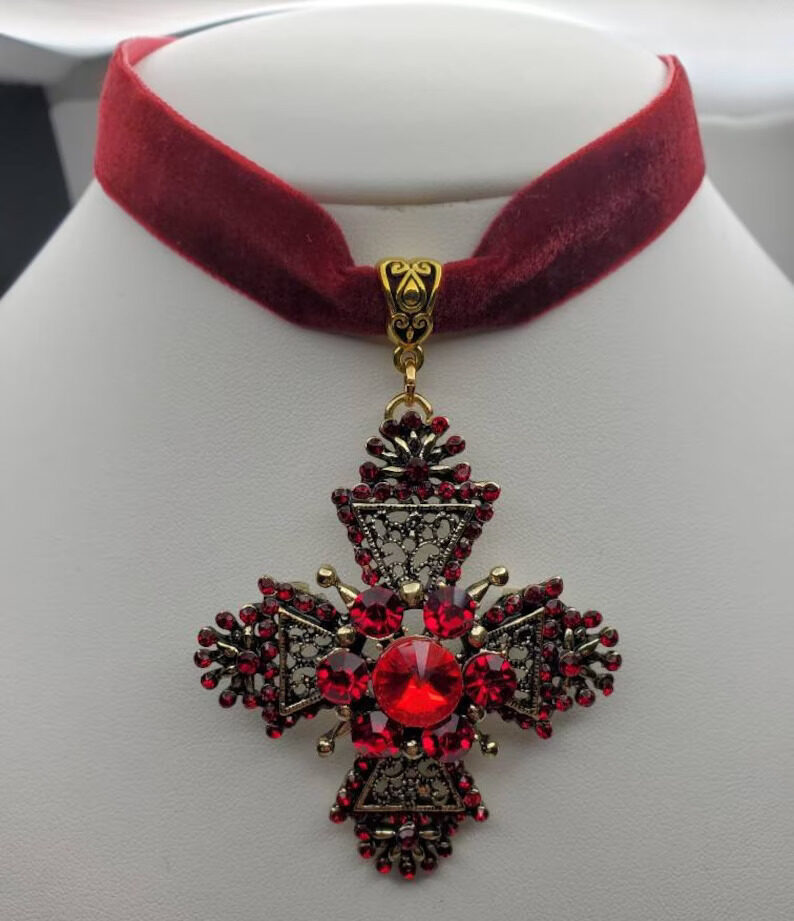
The first thing to note would probably be the pendant. While the pendant wasn’t really “invented” during the Renaissance, it gained so much popularity in that period that it might as well have. Pendants dislodged brooches and pins from their previously held status as the most common piece of jewelry and became something every nobleman and woman would wear.
People wore pendants on long chain necklaces, on the girdle, or fixed to the dress like a brooch. The reason pendants became so popular all of a sudden was likely the fact that jewelers could suddenly start making them much more complex, interesting, and extravagant.
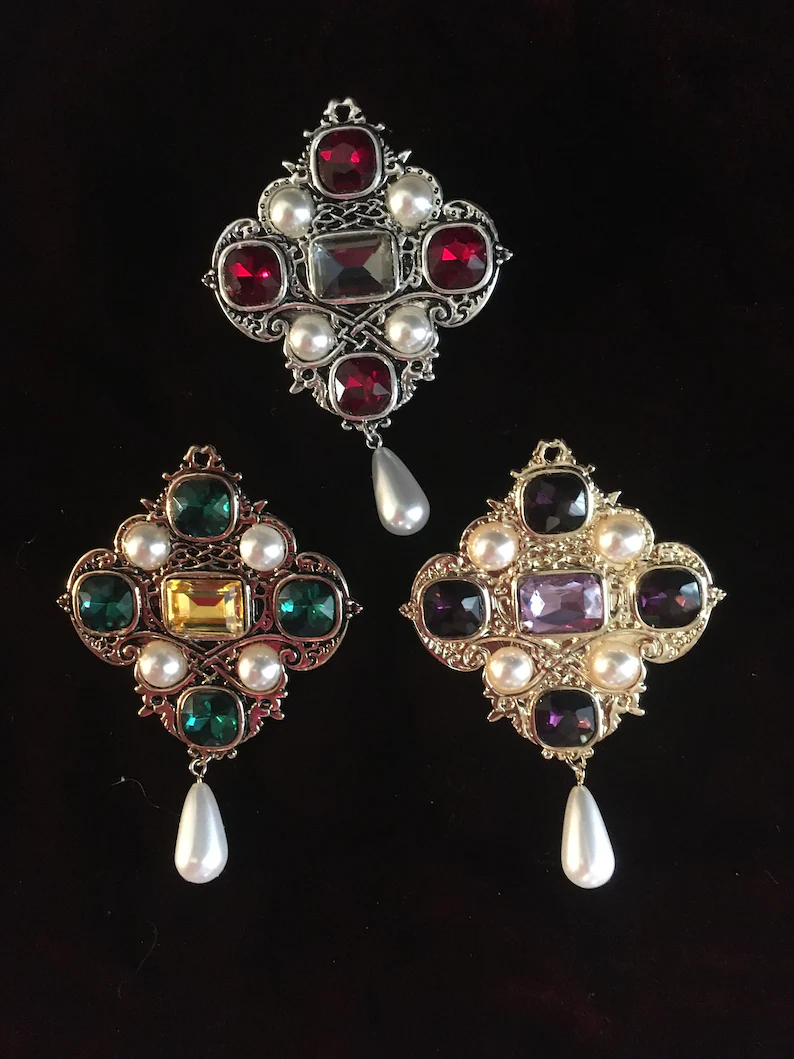
No longer just simple circular discs with a gem in the middle, Renaissance pendants basically became small metal paintings and sculptures. Some pendants had entire portraits, family crests, Biblical depictions, or mythological beasts done on them with enamel and gemstones.
Often square and made of nine or more segments, pendants were now being adorned with many different multi-colored gemstones at the same time, they had various intricate engravings, and often had even more gems hanging off them like earrings. What’s more, they were also usually two-sided, so the wearer could turn them around and show off both sides to their admirers.
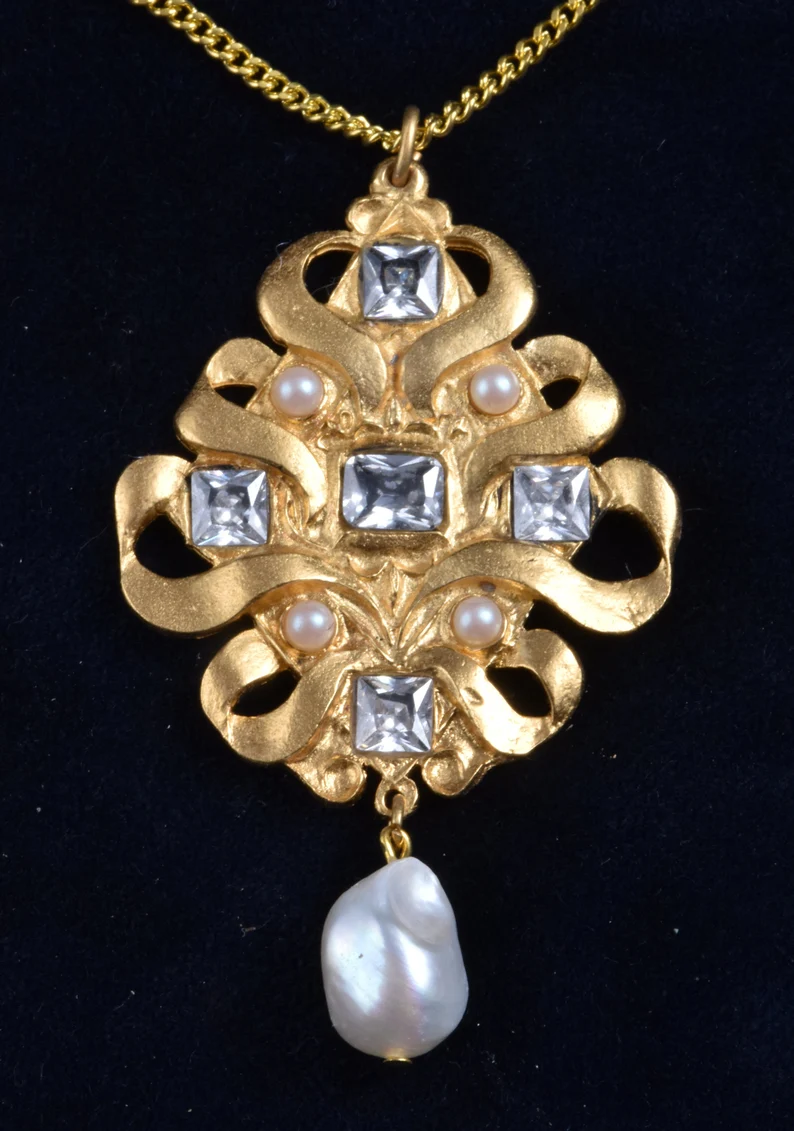
The rise of pendants didn’t mean that pins and brooches disappeared, of course, nor that other jewelry types were no longer popular. Rings were still very much in fashion and nobility often wore rings on all fingers and even with more than one ring per finger.
The sudden presence of so many precious gemstones meant that most ring designs moved away from simple metal bands and almost every valuable ring was now adorned with a giant gemstone on top of it.
In fact, as a fun bit of trivial, some massive rings were even made with secret tiny compartments under the bezel for the wearer to sneak in scented materials or drops of perfume. This way, if the stench in the ballroom got unbearable (even though people did bathe fairly regularly at the time, it’s a myth that they didn’t), the wearer could sniff their own perfumed ring for a bit.
Some rings were even made with compasses and sundials on them, and some even had clocks incorporated on them. Actual portable watches were still a bit away from becoming a common item one would wear, but timepieces were being made and placed on rings, pendants, pomanders, and other such pieces.
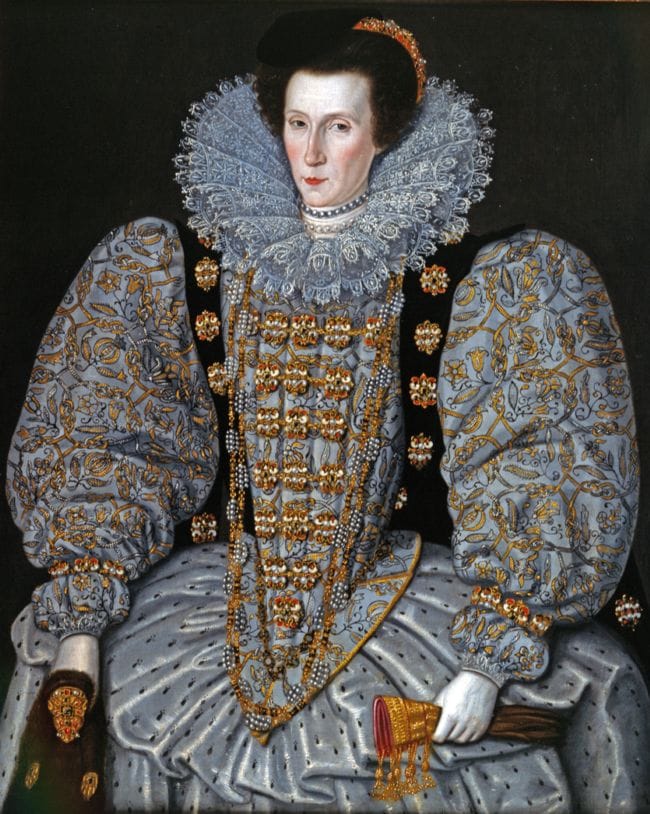
Earrings and dress jewels also became even more popular as the nobility was looking for every possible way to put more precious gemstones on their clothing, so, it wasn’t that uncommon for noble ladies to just cover their entire dresses with webs of gold and gemstones, like dozens of pendants attached to one another.
Where Can I Find Renaissance Jewelry?
If you’re looking for authentic Renaissance jewelry today, you’re going to have to reach out to collectors and museums. If you’d rather look for contemporary jewelry made in the Renaissance style, however, there are plenty of places, both online and at local retailers that you can contact.
We recommend starting your search on Etsy, as you’ll find some fantastic replicas and even vintage pieces there. You can also find some interesting pieces on Amazon, but as always, do your due diligence as each store has its own policies and regulations. Also, the quality can vary greatly.
Wrapping Up
Renaissance jewelry is as gorgeous as almost everything else made in that period which is hardly surprising as the Renaissance was one of the wealthiest periods for Europe as a whole. With all those gorgeous gemstones flooding in from South America and India, the most obvious thing European jewelers could do is start crafting the largest, most elaborate, and most colorful and beautiful jewelry imaginable.
What’s arguably even more noteworthy about Renaissance jewelry, however, is how significantly the jewelry craft itself changed. Most jewelers started specializing in specific areas of jewelry crafting and that specialism started leading to much more intricate details and higher quality but also to a much more complicated and multi-step process.
In essence, it’s probably not an understatement to say that the Renaissance is when jewelry crafting stopped being just art but started moving toward becoming an industry too.







